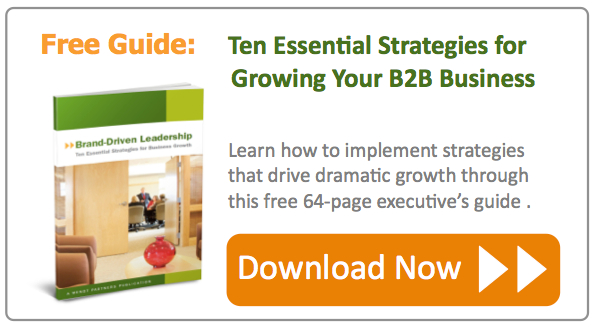Doug Wendt is a co-founder and senior partner with Wendt Partners.
One of the challenges many business owners face is that of deciding how they should go about making more money. The conventional wisdom that many business advisors and coaches give to their CEO clients is to look for every opportunity to generate greater profits. Unfortunately, this mindset is distracting and destructive to the success of your business.
 For example, an accountant once advised a good friend of mine to stop leasing office space for his professional services firm and instead buy a small building or office condominium. In another instance, a business attorney recommended that a CEO purchase more computers and office equipment at year-end, if for no other reason than for the tax benefits. In both cases, these seemingly helpful insights ended up locking the companies into inflexible investments or pathways that later threatened their ability to respond to marketplace changes. Business owners are forever receiving this kind of advice: Buy this, lease that, spend more here, spend less there, get this good deal over here, don't miss the opportunity over there – all in the name of reducing costs, saving money and, so the story goes, increasing profit.
For example, an accountant once advised a good friend of mine to stop leasing office space for his professional services firm and instead buy a small building or office condominium. In another instance, a business attorney recommended that a CEO purchase more computers and office equipment at year-end, if for no other reason than for the tax benefits. In both cases, these seemingly helpful insights ended up locking the companies into inflexible investments or pathways that later threatened their ability to respond to marketplace changes. Business owners are forever receiving this kind of advice: Buy this, lease that, spend more here, spend less there, get this good deal over here, don't miss the opportunity over there – all in the name of reducing costs, saving money and, so the story goes, increasing profit.
How the Illusion of Profit Can Cost Your Business
The reality, however, is that in almost every instance, these decisions end up costing the business far more money than they generate, and cause much greater damage. Why? Because they distract the company from the critical path of its core revenue strategy.
Many years ago, I worked full-time as an Emergency Medical Technician (EMT) for a private, for-profit ambulance company that provided service across a large urban area. This company had contracts with a wide range of communities, and the potential profit was, naturally, capped by contractual limitations and insurance reimbursement rates.
The firm's owner had built the company literally from scratch -- he was a true American entrepreneurial success story. Starting as a freelance accident photographer working for 'ambulance chaser' injury attorneys during his high school days, this enterprising individual later purchased a used hearse, started making trips to pick up patients, and 25 years later he was running one of the largest private ambulance companies in the Northeastern United States.
When Saving a Buck Threatens the Business
However, because of his background and 'rags-to-riches' history, he tended to look for every opportunity to make or save a buck. This sounds like a great impulse. We all know individuals who seem to be able to literally make a dollar appear out of nowhere at every turn. But what was an admirable and scrappy trait when the company was small, became near-crippling as the company grew larger.
One of the longstanding strategies he employed was to always buy the company's ambulances outright. The company would purchase rigs -- often well-used rigs from other companies -- and run them until the odometers literally failed (or pretty close). Certainly, buying equipment at a discount and then aggressively using it to the end of its service life seems like a shrewd and money-saving approach, especially if you can make the purchases with cold, hard cash.
What is Your Core Revenue Strategy?
But what is the core revenue strategy of an ambulance company? The answer is: To provide an ambulance where it is needed, when it is needed and to reliably arrive, service the patient, complete the transport process and receive remuneration for this work. What are the two most important items necessary to the success of this core revenue strategy? First: Trained, professional personnel. And second: Available, reliable ambulances.
By purchasing a mixed bag of ambulances – built by different manufacturers using different chassis and with a wide variety of parts and components – the ambulance company owner increased the workload on his in-house maintenance department ten-fold. Part shortages were common, equipment failures were frequent, and ambulance breakdowns became an epidemic. When a unit did fail (which any vehicle that sees 50,000 miles of heavy road use per year will do), return-to-service cycles spun out of control due to a dizzying array of factors.
As a result, the impressive apparent profit associated with the total savings up-front ended up costing the company multiple times that amount in lost revenue due to unavailable equipment; lost customers due to unreliable service; staff recruitment and training costs as frustrated senior employees left and had to be replaced (would you stay with a company that makes you sit in failing equipment all day and risk baking mid-summer in a rust bucket with a broken air conditioner?); and other un-budgeted expenses (special-ordered parts, maintenance staff overtime, having to pay EMTs for a full shift when they could only work a partial one, etc.).
Making Change, Creating Value
Finally, the owner recognized that it was time for him to hire a Chief Operating Officer (COO) and begin to hand control of the company's day-to-day operations over to a strategic management team – rather than making all decisions unilaterally himself. Within months of the COO's arrival, the first major decision was implemented: Securing a new, 2-3 year lease strategy for the entire fleet.
All of the old rigs were sold off, and the company committed not only to newer equipment, but to a defined lifecycle for all ambulances going forward. Does leasing cost more? Yes, undoubtedly it does. Does the company lose the opportunity to save money on assets, taxes, etc? Certainly. Does financing rather than purchasing with cash cost more? Absolutely. Does any of this matter in the end? Absolutely not.
From the first week that the new fleet went into service, the company's service reliability increased and the "business side of the business" actually built a new reputation for quality that resulted in new contracts, a better reputation and, a few years later, a strategic sale to a $1 Billion national industry leader.
While many factors went into the ultimately successful sale, there is no question that the change in capital equipment strategy was a key component. Who wants to buy a business with broken equipment, disgruntled employees, a hostile union, patient lawsuits and clients just waiting for the contract expiration date to arrive so they can move over to your competitors? All of these issues were at risk as long as the company stayed wedded to its founder's 'save a penny, lose a dollar' decision-making process.
Stability, Sustainability, Scalability & Success
The message to business owners is clear: To make the most, focus on the least. You're building a business, first and foremost. And the value of your business is not just the sum total of the profits you can extract, the savings you can achieve or the assets you can obtain. No, the value of the business is in the ability of your enterprise to sell, secure, support and deliver revenue-generating products and services that are needed in the marketplace.
Scalability is only possible after sustainability is achieved, and sustainability is only possible after stability is secured. The key to being stable begins with simplicity: Giving single-minded focus and devotion to making the enterprise reliably and consistently capable of execution along the critical path of its core revenue strategy.
Ask yourself what you can do today to streamline, simplify, reduce bottlenecks and make your business as agile, consistent, flexible and reliable as possible. Remember, never let anything interfere with the core 'business of the business' in your company.

Image Credit: Flickr @ Creative Commons






